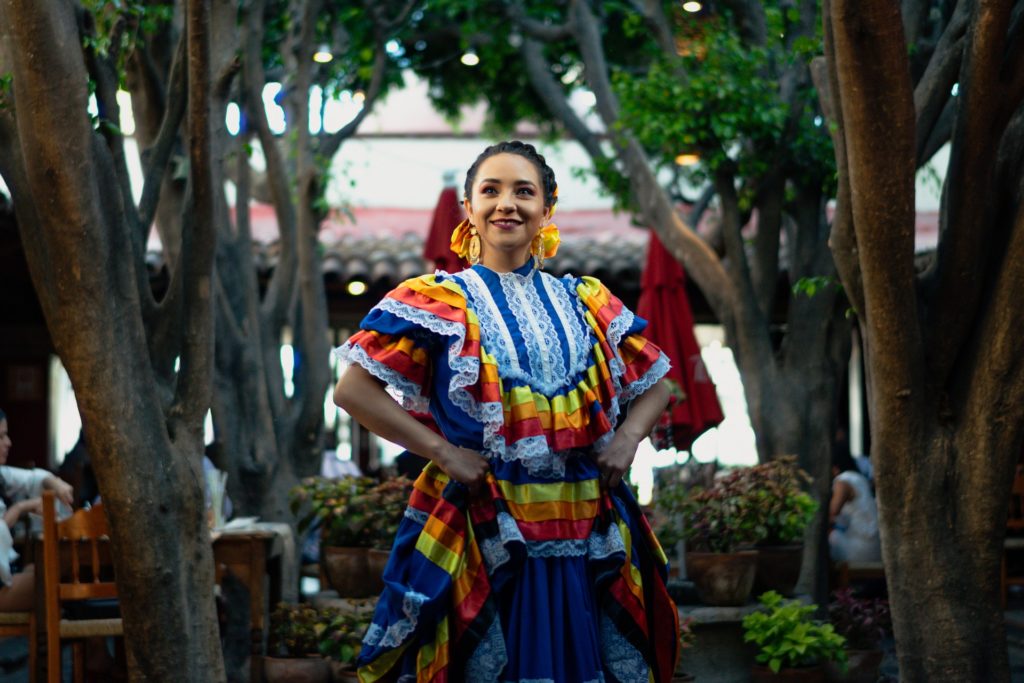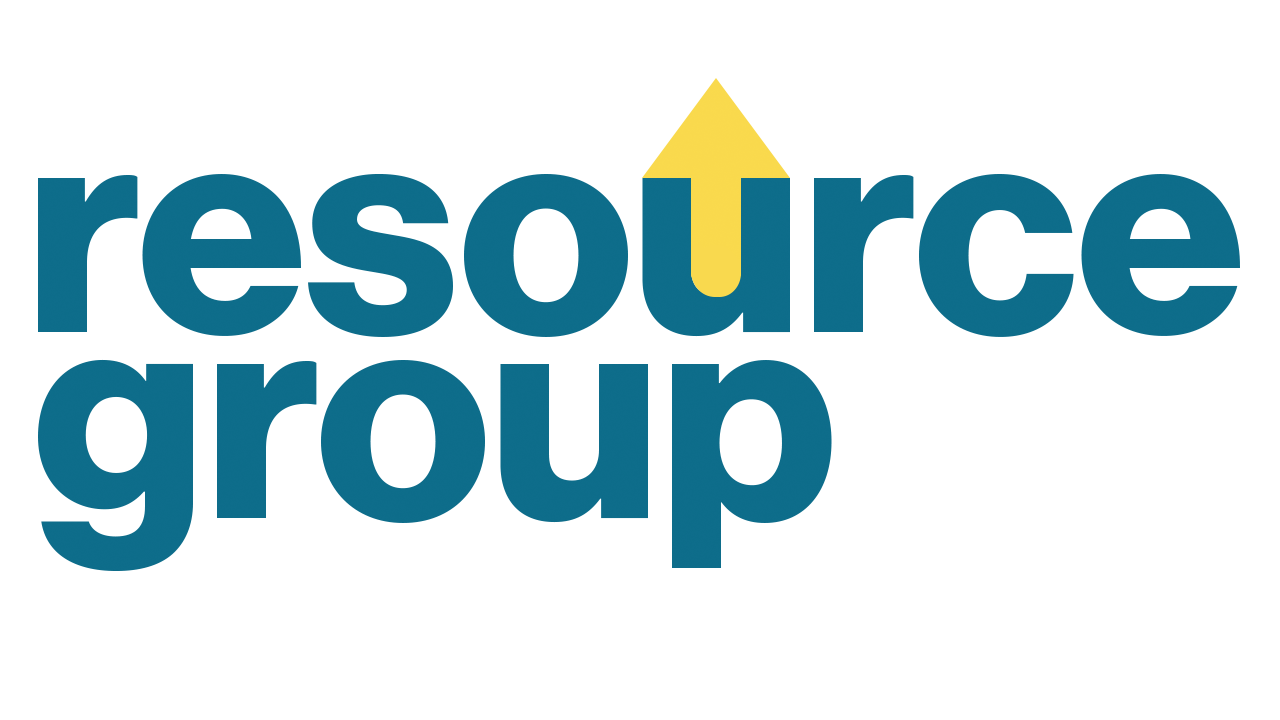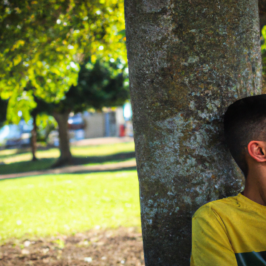
By: The Resource Group Team
Cinco de Mayo, Spanish for the “Fifth of May,” is an annual celebration held on this day every year. The day is observed to commemorate the 1862 event where General Ignacio Zaragoza led the Mexican Army’s victory over the French military at the Battle of Puebla. Since then, the story of the army’s victory over the much larger European forces is celebrated in Mexico. The commemoration of the battle includes largely ceremonial demonstrations such as battle reenactment and military parades, and the city of Puebla marks the event with a festival of arts and local cuisine.
Even though Cinco de Mayo is celebrated in and originated in Mexico, the day is more popular here in the United States. America has observed the day since at least 1863 beginning in California. During the growing civil rights movement in the 1960s, Mexican-American activists celebrated the day and used it as a source of cultural pride. The Chicano movement formed in the 1960s with the stated goal of empowering Mexican Americans to embrace their cultural heritage, and celebrating Cinco de Mayo became a useful tool in connecting these new citizens to the story of America as a whole.
However, Cinco de Mayo only became a nation-wide celebration in the late 1980s when the Texas based Gambrinus Group used the event as an opportunity to promote their new line of imported Mexican beers, Corona and Modelo. Decades later and the cultural roots of the day have receded into the background as Cinco de Mayo became synonymous with alcohol, parties, and shallow representation of Mexican culture.
The story of Cinco de Mayo’s transformation from a day of cultural pride and remembrance to a hedonistic display of excess is a striking example of cultural appropriation. Once a term only used in academia, cultural appropriation has become a more well-known concept in the last five years. Since then, it has become a permanent fixture in our collective vocabulary and despite this it is still seen as a vague term. Put simply, cultural appropriation is defined as “The adoption or co-opting, usually without acknowledgment, of cultural identity markers associated with or originating in minority communities by people or communities with a relatively privileged status.”
This doesn’t mean that a white person is not allowed to enjoy Thai food or to learn a second language. There is a significant difference between appreciation and appropriation. Appreciation is when someone seeks to understand and learn about another culture in an effort to broaden their perspective and connect with others cross-culturally. Appropriation, on the other hand, is simply taking one aspect of a culture that is not your own and using it for your own personal interest.
Cultural appropriation is not just offensive to the cultures that are being stolen from, but has real psychological damage associated with it. In this article, we will explore the various forms of appropriation and why they can be harmful to marginalized communities. To do this, we will be citing empirical data from peer-reviewed studies as well as anecdotal evidence from the lived experiences of those who have felt the effects of cultural appropriation head on.
The Overall Effects of Racism and Discrimination
Before taking a look at the specifics of cultural appropriation and its consequences, we first must look broadly at the effects of general racial discrimination of the human psyche.
Studies have documented that discrimination is associated with higher levels of depression and anxiety symptoms and psychological distress. Based on in-depth qualitative interviews, researchers concluded of racial discrimination matter profoundly for mental health because they are experiences of exclusion that trigger feelings of a ‘defilement of self.’ This includes feelings of being over-scrutinized, overlooked, underappreciated, misunderstood, and disrespected. Several researchers have also argued that stressors linked to discrimination may be pathogenic in that it can later lead to physical health issues as well.
This research also shows that exposure to discrimination and its negative consequences for mental health begin early in a person’s life. A review of research on discrimination among children and adolescents found 121 studies that had examined the association between discrimination and health among children up to 18-years-old. Exposure to discrimination predicted worse mental health in 76% of the 127 associations examined.
Studies have concluded that there are noticeable negative mental health effects to discrimination but discrimination is not always blatant. Being denied housing or careers based on one’s race or enduring racial slurs and violence are conspicuous examples of racism, but discrimination can occur in less identifiable ways. Cultural appropriation is often more subtle and less noticed than other forms of discrimination but it has negative mental health effects all the same.
Trivializing Historical Violence and Oppression
When cultural signifiers and iconography are co-opted by those in positions of power, it is often done so while ignoring the context in which it is from. The best example of this is the use of Native American mascots and images for professional sports teams. The use of Native American terms and imaging is far too common in sports but the best known offender is that of the NFL team the Washington The owners and fans of the team have defended the name, stating excuses such as “keeping a tradition” or “honoring American history.” However, their continued usage of the term for entertainment purposes actually serves to erase the violent history behind it.
The term is a reference to the days when colonies, trade companies, and even some states issued bounty proclamations for exterminating Native American people and providing the bloody “red skins” as proof of “Indian kill.” In 1863, for example, a newspaper in Minnesota carried the following notice: “The State reward for dead Indians has been increased to $200 for every red-skin sent to Purgatory. This sum is more than the dead bodies of all the Indians east of the Red River are worth.”
With a history as violent as this, it is no wonder why many would consider this term as offensive. But it isn’t just offense that is the issue with this type of appropriation. The real psychological implications are considered Historical Trauma or Intergenerational Trauma. The concept of historical trauma was initially developed in the 1980s by First Nations and Aboriginal peoples to explain the seeming unending cycle of trauma and despair in their communities. Essentially, the devastating trauma of genocide, loss of culture, and forcible removal from family and communities are all unresolved and become a sort of “psychological baggage that is continuously being acted out and recreated in contemporary culture.”
Research has also shown that the impacts of trauma are even more pronounced when the trauma has been deliberately inflicted rather than the result of natural circumstances, as was the case with Native American genocide. Deliberately inflicted trauma creates victimization as well as all the associated emotional, psychological, cultural and spiritual harm. Deliberately inflicted trauma is much harder to recover from as it undermines the cohesion and strengths of individuals and communities.
Taking Without Respecting
Another issue with cultural appropriation is the way it allows for people with power and privilege to take the things they like from a culture while still excluding and discriminating against that same group of people.
One example of this concept in action is the rising prevalence of culturally appropriating cuisine from non-white cultures. Gentrification – the process by which urban renewal displaces the occupying demographic – is one of the main offenders of this in our society. When neighborhoods in large cities begin to gentrify, it often begins by bringing in upscale versions of a culture’s cuisine and catering it towards more affluent and white demographics. This in turn drives up costs of living in the area and pushes out the communities being stolen from.
By appropriating a culture’s food, it serves to make that food the entire identity of that culture. As food writer Soleil Ho explains, “We’re appreciated for our usefulness in giving our foodie friends a window into the off-menu life of our cuisines, but the interest usually stops there.”
It also allows the appropriator the ability to take the parts they enjoy from a culture and ignore the context in which it exists. In the same article, Soleil Ho gives an example of the danger of this selective cultural knowledge. “You look at a map of the world and point a finger to Mongolia. “Really good barbecue.” El Salvador. “Mmm, pupusas.” Vietnam. “I love pho!” When you divorce a food from its place and time, you can ignore global civil unrest and natural disasters (see: Zagat declaring Pinoy cuisine the “next great Asian food trend” this past fall as deadly floods swept through the Philippines.)”
While many westerners genuinely believe that their appreciation of a culture’s food is emblematic of their wider appreciation of that culture as a whole, too often the appreciation starts and stops with food. Referencing two specific instances of this (a band using East Asian food references in an offensive lyric and a television chef filming an episode on Asian food and using stereotypical tropes), Soleil Ho doubts that appreciation of food really advances a person’s understanding of culture. “I don’t doubt that Day Above Ground and Alton Brown love bulgogi and soba and want more people to enjoy them, but that kind of appreciation certainly doesn’t seem to have advanced their understanding of the Asian American experience beyond damaging and objectifying generalities.”
The Commodification of Subcultures and the Mainstreaming of Societal Resistance
The commodification of subculture and resistance is another way that cultural appropriation damages the people being stolen from. Within a capitalist economic system, commodification is defined as “the transformation of goods, services, ideas, nature, personal information or people into commodities or objects of trade.”
There are two primary and intertwined methods of commodification: Diffusion and Defusion. Diffusion is the process of spreading styles, ideas, values, and norms into a wider society while Defusion is the process of depoliticizing or ‘watering down’ the values, meanings, ideals, and subversive potential of a group. Both diffusion and defusion are ways that identities and cultures are wiped of their individual meanings and commercialized through the market for everyone to ‘enjoy’ similarly.
Commodification begins with the mass media building up a certain subculture, advertising it in different forms of media and retail, and attempting to gain attention from a wide audience. When a subculture becomes commodified, their societal resistance is mainstreamed, and if everyone begins to practice that resistance then it is no longer a subcultural resistance to a larger society. Most subcultures view commodification as a negative aspect on their image because “the consumption of subculture can lead to a decrease in meaning as more people consume it”
This commodification and mainstreaming serves – though not always purposely – to strip a subculture or movement’s radical context. For example, as LGBTQIA+ rights become more and more acceptable in modern times, many brands are willing to use Stonewall iconography and other cultural signifiers such as rainbow flags in their products and advertisements. As author Megan Crutcher described in her article on this subject, “The riots were a radically inclusive act, showing the world that LGBT individuals would no longer be silenced, killed, excluded, discriminated against, and abused. Pride has always been a radical act. But in a world where being LGBT is becoming slowly more accepted, Pride has become an opportunity for economic gain.”
While many may see the rising prevalence of LGBTQIA+ acceptance in mainstream media as a positive and hopeful sign of improving conditions for historically marginalized people, it rarely follows through on that promise. As Meg Fair of the Pittsburgh Current wrote, “large corporations make Pride-themed ads, floats and merchandise solely for feel-good optics while giving little to no money to causes that actually support and benefit the LGBT community. Some of those same corporations with temporary rainbow logos spend the entirety of the year engaging in exploitative practices for financial gain. What’s more, LGBT people who don’t fit the mainstream mold or stereotype often face the same discrimination.”
The idea of a “mainstream mold” that she mentions is another result of this commodification and mainstreaming. Recently, popular television programs such as Queer Eye for the Straight Guy, which depicts the make-over of a straight male by five gay hosts, display characteristics associated with the gay community allowing for the absorption of stereotypes. Instead of dispelling stereotypes, programs like Queer Eye validate and perpetuate these images. While the presence of gay characters in the media indicates movement towards greater acceptance of homosexuality, the commodification of gay stereotypes demonstrates the hegemonic nature of mass culture and the justification of exploitation through tolerance.
Taking a subculture and stripping away the radical founding of its movement in order to more easily fold it into the wider mainstream culture takes away the momentum that activists have fought hard to create, all the while doing nothing to eliminate the real issues that the subculture originally coalesced to fight against. By ignoring the original context of these movements, the underlying issues are allowed to continue.
According to the National Alliance on Mental Illness, “Although the full range of LGBTQI identities are not commonly included in large-scale studies of mental health, there is strong evidence from recent research that members of this community are at a higher risk for experiencing mental health conditions — especially depression and anxiety disorders. LGBTQ adults are more than twice as likely as heterosexual adults to experience a mental health condition. Transgender individuals are nearly four times as likely as cisgender individuals (people whose gender identity corresponds with their birth sex individuals to experience a mental health condition.”
The Damaging of Self Esteem and Images of Beauty
The theft of culture can often damage the way people from those cultures, especially young children, see themselves. Cultural appropriation of specifically African American hairstyles is an example of when privileged people are able to express themselves in ways that people from that culture are rarely able. Although it is slowly becoming less common, many corporations in America have histories of denying black women employment on the basis of finding their natural hair styles as “unprofessional.” Places that have denied employment to those with natural hairstyles like dreadlocks typically consider it an extreme hairstyle comparable to a Mohawk or unnatural hair coloring.
In an article in Ebony, Maryline Dossou reflects on the first time she became aware of this trend. “After being accepted to a teaching program in New York, I witnessed a conversation between two ladies with natural hair. One had been asked by a bewildered colleague if she was going to “keep her hair like that” when she interviewed for teaching positions. She, like me, wondered what was wrong with wearing her hair the way it grew in.”
This disdain for the natural way African American women have worn their hair for decades is contrasted with the way the media treats white women who enjoy the same styles. Whether it is Marie Claire magazine describing Kendall Jenner’s cornrows as “bold” and “an epic new level,” or Teen Vogue choosing to use a white model to showcase Senegalese twists, the result is the same.
As Maisha Z. Johnson explains in an article for Everyday Feminism, “When Black women have to fight for acceptance with the same styles a young white woman can be admired for, what message does that send to Black women and girls? It says that our natural beauty isn’t beautiful at all – and that our features are only appealing when they’re adopted by white women.”
This damaging of self esteem exceeds beyond the appropriation of hairstyles and extends to cultural stereotypes as a whole. In a study conducted by the Stanford Research Institute for Comparative Studies in Race and Ethnicity, researchers examined the consequences of professional sport mascots and other prevalent representation of Native Americans on the levels of self esteem in young Native American students. The study exposed these students to the Cleveland Indians Chief Wahoo logo, the University of Illinois at Urbana–Champaign’s former symbol of Chief Illiniwek, Disney’s animations of Pocahontas, as well as other common images of Native Americans. The researchers found that after seeing these images, the young students indicated a lower sense of self esteem and community worth as well as a lower likelihood of imagining positive achievement-related possibilities in their future. The researchers later theorized that these depictions are harmful because they remind Native Americans of the limited way that others perceive them and their culture, and that this in turn limits the way they can see themselves as individuals.
Perpetuating Systemic Poverty
While the idea of the American dream is one of equal opportunity to pursue socioeconomic improvement, the reality has never been that simple. For many oppressed communities, economic barriers have hamstringed any attempt at upward mobility. So when someone of privilege profits off the labor of other cultures, they are participating in a discriminatory system of inequality. For example, when a white person opens up a store containing new age materials and spirituality products they are able to achieve that level of success due in large part to the oppression of the culture they are taking from.
White people have a simpler time creating these businesses due to long-standing federal government policies that make opening new businesses difficult or impossible for Native Americans.
This allows people from a dominant culture to generate profit from the labor and creations of another culture all the while that same culture continues to experience poverty. Native Americans have a higher poverty and unemployment rate when compared with the national average and currently one-in-four Native Americans and Alaska Natives are living in poverty.
This continued poverty wreaks havoc on an individual’s mental health. According to the Psychiatric Times, individuals who experience poverty – particularly early in life or for an extended period – are at risk of a host of adverse health and developmental outcomes through their life. Poverty in childhood is associated with lower school achievement; worse cognitive, behavioral, and attention-related outcomes; higher rates of delinquency, depressive, and anxiety disorders; and higher rates of almost every psychiatric disorder in adulthood. Poverty in adulthood is linked to depressive disorders, anxiety disorders, psychological distress, and suicide.
Andy Smith, a Cherokee woman and co-founder of Women of All Red Nations (W.A.R.N.), explains in an article for The National Association for the Advancement of Indigenous People how this appropriation serves to perpetuate the existing inequalities in her community. “They have the white privileges and power to make themselves heard at the expense of Native Americans. Consumers like what many of these white writers have to tell them and do not want to become concerned with the facts presented by Native Americans. Our voices are silenced, and consequently, the younger generation of Indians who are trying to find their way back to the Old Ways become hopelessly lost in this morass of consumerist spirituality.”
The Theft of Spirituality and Wellness
Building on what Smith describes, the theft of spirituality for commercialization purposes extends further. The prevalence of yoga in America is a perfect example of this trend. Originally, yoga was developed early in Indian culture as a profoundly spiritual practice of religious significance, so much so that in order to suppress traditional culture in the region, the British sought to make the practice illegal during their occupation. This ban on yoga was effective in the British’s efforts to oppress a country due to the fact that removing a culturally significant source of spirituality and wellness serves to tear critical connections that help people of that culture survive.
In the late 18th and early 19th centuries, the British occupying forces began to create policies that would work towards conciliation with the native culture of the region. One of the facets of this effort was the creation of a new and more modern India that introduced western values and ideas to traditional Indian concepts. This included the re-appropriation of yoga. As sociologist Amara Miller explains, traditional hatha yoga practices were re-appropriated and combined with modern physical culture in an attempt to meld “indigenous” Indian exercises with more Western practices and ideals. Thus, a new, more aerobic and acrobatic version of yoga was born that was devoid of any of the spiritual context of earlier centuries.
This new form of yoga is now the one that is seen all over the western world. The proliferation of a modern and sanitized version of yoga has allowed dominant cultures to take the lead in an industry built off of the backs of historically subjected people. A study of two years worth of issues of Yoga Journal found that a South Asian person had never once been on the cover and that the content of the journal had little to no South Asian authors. Roopa Singh, founder of South Asian-American Perspectives on Yoga in America, discussed the implications of this finding in her interview with The Huffington Post. “The magazine is generally based on South Asian cultural history and theological property, yet this knowledge is primarily ‘authored,’ ‘embodied,’ and modeled by Western women. What happens when people rely on a country or culture as a panacea for their own wounds with respect to race, lineage, and home? No one comes out of this kind of political or personal violence unscathed, and segregation in yoga is injurious to us all.”
What can you do?
Maybe you remember once wearing a costume that you didn’t realize had a violent connotation to it or you believed you were honoring and respecting a culture before realizing that it might have been offensive. Maybe you are just now learning about the real effects of cultural appropriation and you want to be better. There are steps you can take to become a better person:
- Avoid obvious displays of appropriation. This one is the most simple and the easiest one to identify. Avoid dressing up as an ethnic stereotype. Someone’s culture or identity should never be a costume. This includes things such as wearing Native American Halloween costumes for a party, the use of blackface for film and television, or wearing a sombrero on Cinco de Mayo.
- Acknowledge the origins of art and ideas. You don’t have to completely avoid other cultures to not partake in cultural appropriation. It is simply a matter of showing respect and giving credit where it is due. For example after “China: Through the Looking Glass” was announced as the theme for New York’s Metropolitan Museum of Art’s red carpet event, Rihanna arrived wearing a fur-trimmed robe designed by Guo Pei, a Beijing-based Chinese couturier. The garment was made with input from the community it represented and was created with care and accuracy while making sure credit was appropriately distributed to the culture and people that made it possible. Oskar Metsavaht, the founder and creative director of the popular Brazilian sportswear brand Osklen, treated his dealings with the Asháninka tribe for Osklen’s Spring 2016 collection with collaboration and respect. Francisco Piyako, an Asháninka representative, told Quartz the tribe will get royalties from Osklen’s spring 2016 collection, as well as a heightened public awareness of their continued struggle to protect land against illegal loggers and environmental degradation.
- Don’t adopt sacred artifacts as accessories. Native American headdresses, religious symbols, and other culturally important items are considered sacred to many cultures and communities and should never be used as a fashion statement.
- Engage with other cultures on more than an aesthetic level. If you want to truly engage in a culture and learn about its history, then you have to take your curiosity beyond the superficial level. ‘‘Come on, you can’t want the good without the bad,” said rapper and TV personality Nikki Minaj. “If you want to enjoy our culture and our lifestyle, bond with us, dance with us, have fun with us, twerk with us, rap with us, then you should also want to know what affects us, what is bothering us, what we feel is unfair to us.”
The most important thing is to listen. Courtney Ariel ends her article on cultural appropriation with some cogent words of advice for privileged people in our society that seek to better themselves. “Listen. Lead with empathy, always. Be mindful of when appropriation becomes misappropriation and exploitation. You are human, lovely, and amazing. You did not create these constructs and systems. But you might likely be in a position to affect positive change through awareness, greater understanding, and meaningful action. I pray you choose to do so, knowing that I thank you in advance. Being a visitor is not only a great honor. It comes with a great responsibility.”
DISCLAIMER
The information, including but not limited to, text, graphics, images and other material contained on this website are for informational purposes only. No material on this site is intended to be a substitute for professional medical advice, diagnosis, or treatment. Always seek the advice of your physician or other qualified healthcare provider with any questions you may have regarding a medical condition or treatment and before undertaking a new health care regimen, and never disregard professional medical advice or delay in seeking it because of something you have read on this website.






